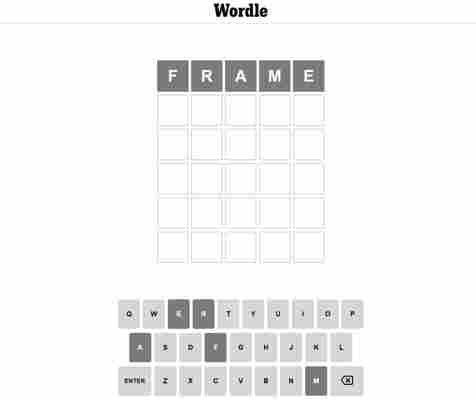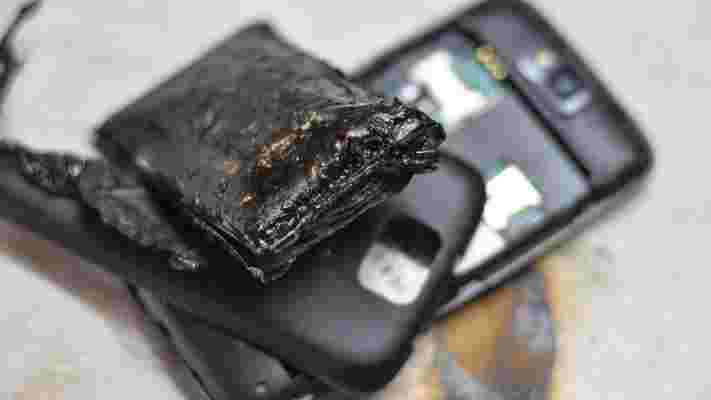Winning at Wordle every day is a daily goal, but the reality is a once-a-day effort to solve a five-letter puzzle that can feel equal parts exhausting and exhilarating. Oh, those rare, solved in three, miraculous solved in two, or incredibly lucky one-and-done. It’s the four, five, and six guesses that really get you - but it’s also those journeys that teach us the most.
For those unfamiliar with Wordle (but then why are you here?), The New York Times’ (recently-purchased) daily word game asks you to guess a five-letter word in six tries. Simple right?
Well, while we could just tell you the Wordle answer for today , (and yes, we have a page to do just that) it wouldn't be much use, would it? Even if it preserves your streak, it's a hollow victory - this is a game where you're only cheating yourself out of learning.
What starts today is a daily (weekdays) diary of how I, someone whose very existence is predicated on a playing with and using words, solved Wordle.
Come with me on a journey of how to pick a first word (was I packing vowels or constants?), and what crucial choices I made along the way to winnow out useless letters, collect accurate ones, and then compose them into one seemingly simple five-letter word.
I'll also do my best to share images of my work. Including all the embarrassing mistakes. Come, let’s learn how to Wordle like a pro, together, so you no longer need to grab the answer.
Spoiler Alert: If you do not want to know today’s Wordle answer, STOP READING IMMEDIATELY.
A mid-day break
Today, I'm playing Wordle on my desktop. I figure it’ll make capturing screenshots of my successes and failures a little easier. On a whim, I ask Siri to play The Beatles’ Abbey Road. The classic album should put me in a good headspace for puzzle work.

The first word
I choose quickly, going with FRAME. It’s a little heavy on the consonant side, but the solid anchors of A and E vowels make me confident I should have at least two correct letter hits.

Disaster
In all my weeks of playing, this is the first time I have ever had a zero letters result on Row 1. On the bright side, I have now eliminated five letters from consideration. But now I'm in the unusual position of having to start from scratch. This means I'll once again begin with a word that has a decent mix of vowels and letters. Putting on a brave face, I dive back in.

The second guess
What’s interesting is that the calculation here is already different because key letters like A and E are no longer available to me. This cuts out a significant number of potential five-letter words.
I've used POUND on many previous Wordles. It leans heavily on consonants but also represents the framework of many other five-letter words. In general, it’s always smart to use words that, with one or two changed letters, could be a different five-letter word.
Feeling unexpectedly confident, I hit enter.
Uh-oh
Things are not going well. Wordle has clearly dug deeper than normal for this quintuple configuration. I got one letter - just the D. At least it’s in the right position. That, in and of itself, helps narrow the list of potential words to an even greater degree. Still, I have very few materials to work with here. Instead of relying on what I have to make the next guess, I must focus on what’s been excluded.
Making a new choice
I never use a scratchpad when Wordling, but I do work out letter configurations in my head before putting them on the Wordle game board. I may also start typing in potential letter combinations in Worlde to see if they spark a word idea. I can do this a dozen or more times before committing.
I also look at letters to identify possible starting letters and what I consider more obvious middle letters. These can be vowels or consonants, but the choices are usually driven by letters I’ve solved for the beginning or end of the word. In this case, all I have is that D.
Looking at what’s left, I notice I have just one vowel (I) left. Y, the sometimes vowel, is still there, but I’m convinced that if it’s in the mix, it’ll be the first letter. That “I”, though. I feel like it has to be used (hard to have a word without a vowel) and has to be in the middle.
Third time’s the charm?
I start by just typing in a few letters to see if they spark full, five-letter inspiration. “HIT,” though, does not.
The work is also full of “is this a word?” guesses. The good news is that Wordle never penalizes you for guessing with words that don’t exist. It just shudders in a rather judgy way to let you know that that simply won’t do.
Guess what, “BILED” is apparently a word, meaning, “Containing, possessing, or having an application of bile.”
Fourth round
I now know two letters, and, somewhat surprisingly, I have them both in the right place. As I guessed, the “I” belonged near the middle. By using an “E” again - even though I know it's not part of the final word - I wasted an opportunity to guess at another letter. In my defense, I really thought “BILED” was not a real word.
I need to take a beat and really analyze what’s left. So many consonants. What could that Wordle be?
In my head, I’m putting every remaining letter ahead of “I” and ending with an “ed” sound just to try and spark some insight. I try a letter combo but don't commit because, as is often the case, my idea doesn’t fit in the allotted five letters.
Stuck, I remind myself that there is a possibility that one or more letters could repeat. I don't see the “I’ doing that, but there could be another “D” in the middle. My brain feels like mush.
Starting over, again
At this stage, I can keep grinding away at my available letters or try a word that pulls in as many unused letters as possible to try and pick up one or two more correct letters. Solving this with two, even in the right place seems next to impossible.
In the end, I decide against this method. My problem is that I have too few vowels. The lack of an “E” before the “D” is concerning. Perhaps it’s a “Y” before the “D.”
I change my mind again and go with a word that has the benefit of using four new letters. I’m praying “SIGHT” gets me at least one or two new letters.
What’s left
Not even remotely what I expected. Only “I” is left standing as “S,” “G,” “H,” and “T” are not in the correct word.
A moment of inspiration
I look at the “V” and start thinking it’s a great letter to go before “I.” Then inspiration hits.
As I noted earlier, I have to leave open the possibility that the word would repeat one or more letters. I enter “VIVID.”
The excitement builds before I hit “Enter.” There’s so much promise in this guess. It’s educated (what’s left to choose, really?) but also a leap.
Success
Wordle awards me a “Great!”. It’s not much of a compliment. It knows I could’ve done better. I’ll take it, though. Just happy to be through this one.
E-bike fires: why they happen, and how you can prevent them
An electric bike can be a game-changer, taking the sweat out of cycling and reducing reliance on your car. However, although accidents are rare, and shouldn't put you off investing in an e-bike, the large lithium battery attached to its frame is a potential fire hazard if not treated with care.
Lithium batteries have a lot of advantages that make them ideal for e-bikes. They can be charged and discharged hundreds of times, they’re relatively lightweight and compact, and they contain lower levels of toxic heavy metals than many other types of batteries. Unfortunately, they can also be very flammable.
Why do e-bikes catch fire?
Lithium batteries like those used in e-bikes contain two electrodes, with an electrolyte fluid in between. As the battery is charged or drained, charged ions move from one electrode to the other.
The electrolyte fluid is highly combustible, which isn’t normally an issue, but if the battery is damaged or overheated, the liquid can ignite. Once one battery cell overheats, the adjacent ones follow (a process called thermal runaway) and the heat and pressure soon becomes too much to contain, resulting in an explosion.
To find out why this happens, TechRadar spoke to the Fire Protection Research Foundation (a research affiliate of the National Fire Protection Association ).
The foundation’s research project manager explained that lithium battery fires happen for a number of reasons, including: manufacturing defects; design flaws; improper use (eg placing a battery near a heat source or leaving it in intense sunlight for an extended period of time, which may lead to the battery overheating); penetrating a battery in a way that causes a short circuit; and using chargers not intended for the device.

These aren't issues that are exclusive to e-bikes - any device containing a lithium battery has the potential to catch fire, as we’ve seen with phones , laptops , and electric cars .
Hoverboards are perhaps the most infamous example. The US Consumer Product Safety Commission (CPSC) is aware of over 250 incidents related to fires or overheating since 2015, when hoverboards started to become popular. Major airlines banned hoverboards from commercial flights , and stores including Amazon , Overstock and Toys R Us suspended sales.
Hoverboards were particularly susceptible because they were so new, there were no design standards that stipulated the use of safety measures like holes to vent excess pressure, or separators that act as a fuse and shut down the cell above a certain temperature. Nor were they subject to strict testing before being sold to the public, unlike other devices containing lithium batteries.

The US Consumer Product Safety Commission swiftly implemented a safety standard for hoverboards and although they’re still not permitted on planes, hoverboards soon returned to store shelves.
E-bikes have been around for much longer, and standards for them are more established, but the Fire Protection Research Foundation explains that bikes involved in fires are often poorly built:
“According to anecdotal reporting from some fire departments, such as FDNY, many e-bikes fires have resulted from those made with low quality components (eg batteries made with inadequate quality control or products that have not been certified by an independent testing laboratory).”
How to prevent e-bike fires
In addition to buying an e-bike from a reputable manufacturer that complies with the appropriate safety standards, there are also measures you should take to take care of your e-bike and avoid fires
To find out what you should do, we spoke to Richard Thorpe, founder and CEO of Gocycle - the company behind our current top-rated e-bike, the Gocycle G4 . He gave the following advice:
Thorpe also suggests you consider recycling your e-bike’s battery after five years, regardless of usage. “E-bike technology is changing and improving every year,” he said.

“Gocycle provides a Responsible Battery Recycling coupon that can be used towards the purchase of a new replacement lithium battery for owners that can demonstrate that they have recycled their old lithium battery."
Finally, he warns against keeping old lithium-ion batteries in your house - whether they’re e-bike batteries or not. Instead, recycle them responsibly.
The National Fire Protection Association has its own safety tip sheet on lithium-ion battery safety , which provides information on safe use of products powered by lithium-ion batteries, along with guidance on what to do if a lithium-ion fire occurs. It also offered the following specific guidance for e-bike owners:
What to do if a fire occurs
Pay attention to your e-bike's battery, and you might be able to spot signs of danger before a fire happens. If there's a strange smell, a change in shape, leaking, an odd noise, or it feels too hot, the NFPA advises moving it away from anything else that could catch fire, if possible, and call the fire service,
If a fire does happen, don't try to tackle it yourself; lithium battery fires are particularly dangerous, as the battery casing can explode at high temperatures, putting you at risk of flying debris. Instead, evacuate the area immediately and call the emergency services.
The risk of a fire is small if you take care to follow the safety guidance above, and it certainly shouldn't put you off purchasing an e-bike, but if it does happen, it's a job for the professionals.
Spider-Man: Across the Spider-Verse may be tied to the MCU
Spider-Man: Across the Spider-Verse (Part One) may tie into the Marvel Cinematic Universe (MCU), the movie’s producers have teased.
Speaking on a recent episode of the Happy Sad Confused podcast, filmmaking duo Phil Lord and Chris Miller hinted that the events of Spider-Man: No Way Home – which saw Peter Parker and Doctor Strange unwittingly open the multiverse – could have implications for Miles Morales and Gwen Stacey in the upcoming Sony picture.
"The multiverse is big and wide,” Miller said, “and all things grow... Why would you think [that in] a multiverse, in which many things are possible, that [those things are] not related?"
"Everything's possible except for this one thing that everyone wants,” Lord added sarcastically.
The first of a two-part sequel to 2018’s Spider-Man: Into the Spider-Verse, Across the Spider-Verse will see Miles (Shameik Moore) and Gwen (Hailee Steinfeld) traveling, well, across the Spider-Verse, encountering different dimensions and, naturally, different incarnations of the titular webslinger.
We already know, for example, that Spider-Man: 2099 (as voiced by Oscar Isaac) will be appearing in the upcoming movie after featuring heavily in its debut trailer . The 1978 Japanese live-action version of Spider-Man also looks set to appear, after a tweet posted by Lord back in 2019 seemingly revealed the character’s involvement.
We know Across the Spider-Verse will implement different art styles for each dimension , too, after Lord and Miller told Collider that each would “feel like it was drawn by a different artist’s hand.”
Analysis: could Tom Holland's webslinger make a cameo?

As for what the pair’s latest tease reveals about Across the Spider-Verse, the list of possibilities is a long one.
Speculation has already been rife that No Way Home stars Tom Holland and Zendaya could appear in the movie. And, although both Lord and Miller shirked the question of their involvement in the aforementioned Collider interview, the confirmed-but-not-confirmed inclusion of Marvel’s multiverse bodes well for the chances of seeing Holland’s webslinger in action once again.
The actors seem on board with the idea, at least. During the press tour for No Way Home, both Holland and Zendaya said they’re "just waiting for the phone call" when it comes to lending their voices to the animated Spider-Verse.
If one or both of Marvel’s poster couple do make an appearance, though, we don’t anticipate it’ll form a huge part of Across the Spider-Verse’s plot. In the Happy Sad Confused podcast, Lord clarified that his team’s job is to tell new and interesting Spidey stories, while acknowledging the beloved history of the larger Spider-Man franchise.
"The writers and director[s] are all buddies of ours, so we sort of have been in the loop as far as what's going on [in other movies],” Lord said. “And we are always trying to make sure we're not stepping on each other's toes and telling different types of stories, and different themes, and all that stuff – because people want an original story that feels new and interesting. It's our job to give it to them."
It’s clear, then, that Across the Spider-Verse will deliver on its promise of fan service while also breaking new narrative ground for the decades-old character. And with Across the Spider-Verse (Part Two) also in the pipeline for the coming years, the franchise has never been in ruder health.